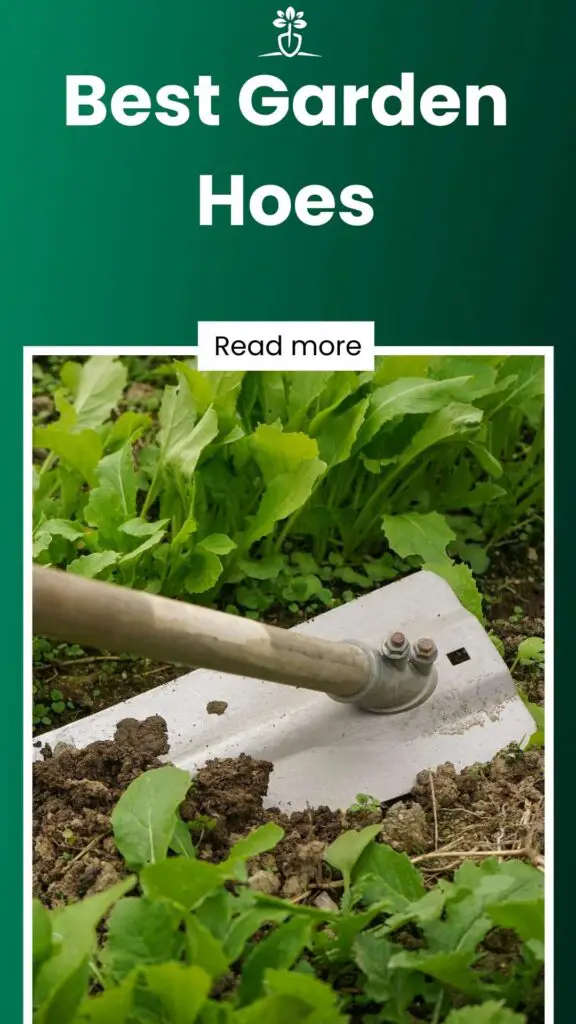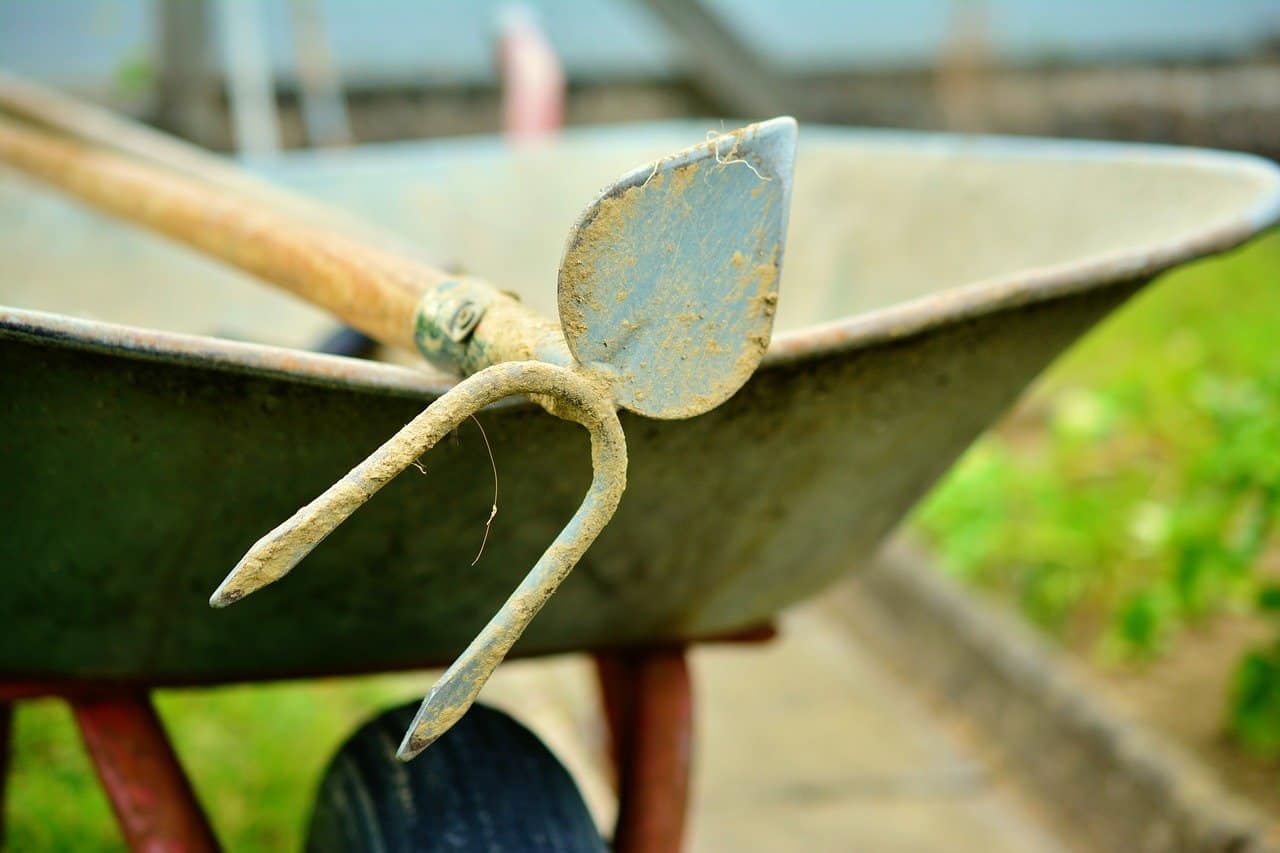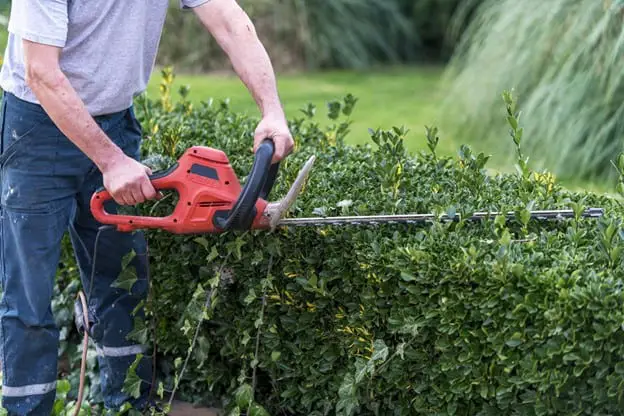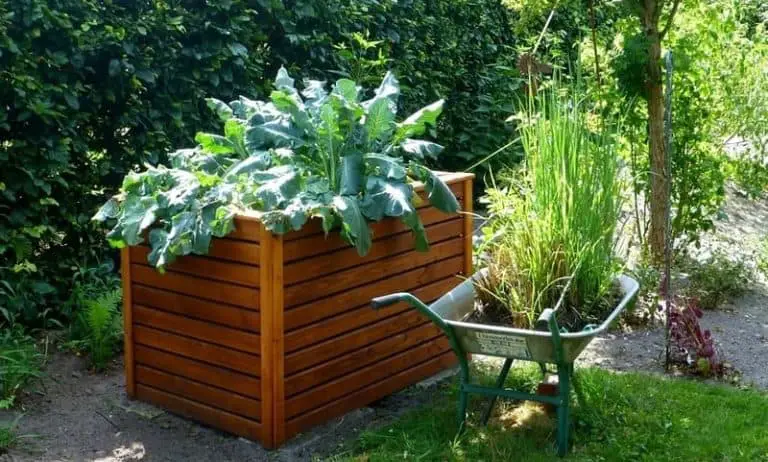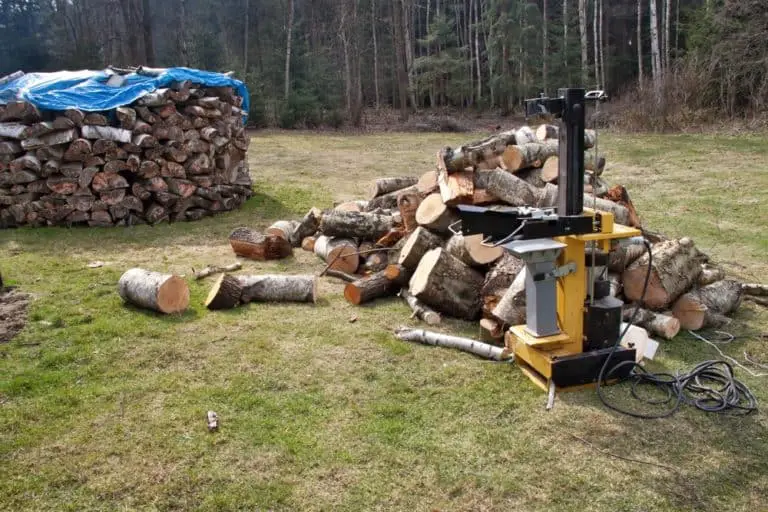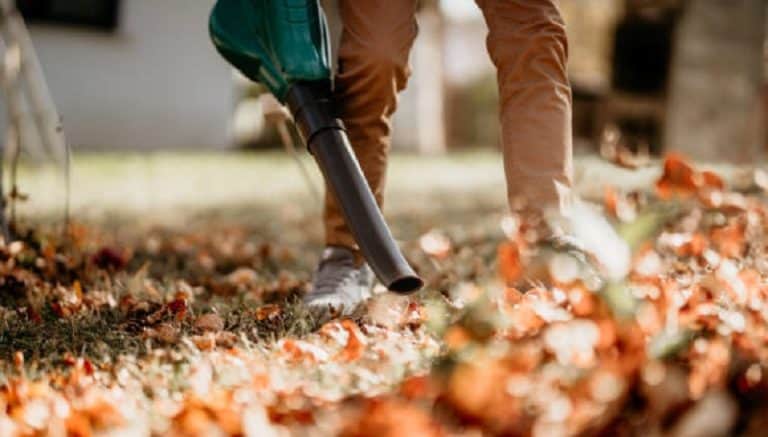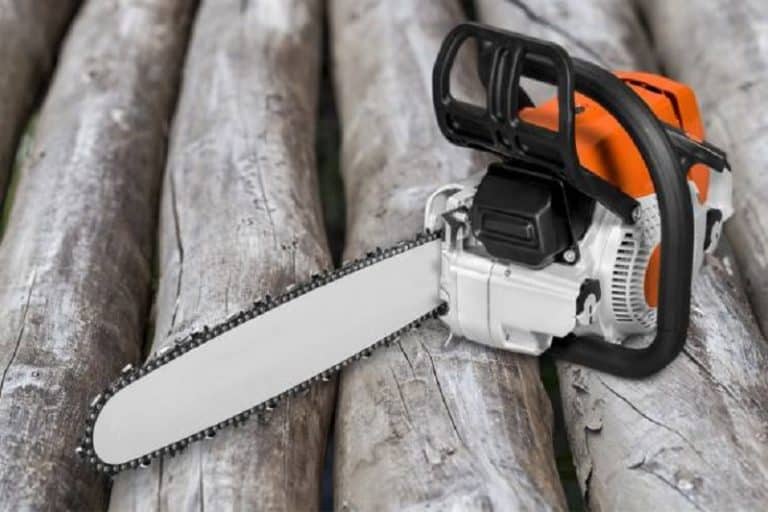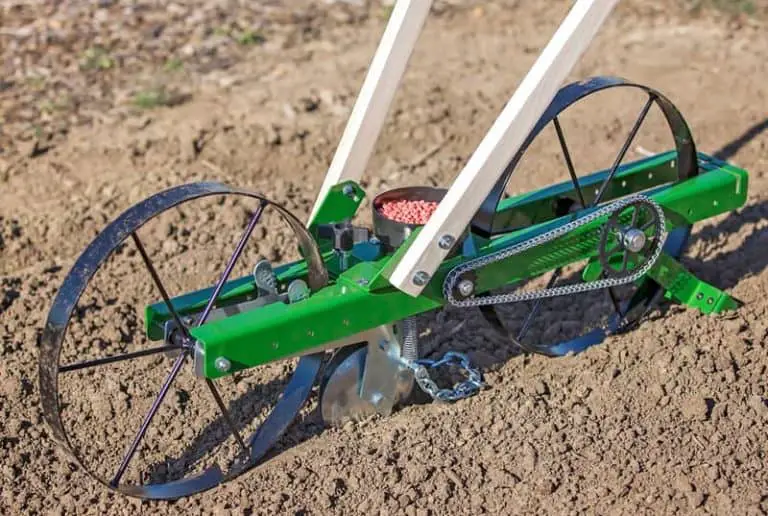Best Garden Hoes
Picking the right garden hoe makes getting rid of weeds as easy as pie and saves you from backaches. It’s not just any tool; think of it as your garden buddy. There are so many options, like draw hoes, wheel hoes, stirrup hoes, cultivators, and plows. So, how do you find the perfect one for what you need?
We have reviewed some of the best garden hoes for weeding in each category, as well as some tips on how to get the most out of them. Hoeing is often a dreaded activity, but we hope these tools will help make it an easier and more effective activity.
Our Top Picks at a Glance:
Contents
Top 5 Hoe’s for Gardening
1. Corona Clipper SH61000 Garden Hoe
Key Features
- It features a 62-inch (Approximately 5 feet) handle.
- The blade is diamond-shaped and it snips the weeds at a horizontal position.
- It features a sharpened carbon steel blade.
- The blade is 6.5 inches wide.
- It weighs 2.55 pounds.
Don’t mind the name Corona, we know it may not be very appealing at the moment. This is a unique diamond-shaped hoe that is designed to glide in the soil while weeding.
Why we like it
- It’s relatively light, allowing you to work with it for a long time.
- The long handle allows you to use it in a standing position.
- The carbon steel blade is sturdy and easy to sharpen.
- It allows you to cover large areas at times.
- You can use the tips to weed smaller parts of the garden.
What we don’t like
- The connection between the blade and the handle loosens often.
- It lacks a sheath to cover the blade. Since it’s sharp on all sides, it poses a health risk when left lying around.
Our Verdict
This tool makes it easier to weed more ground at a time. It may be hard to do it back and forth because of the angle of the blade, but it’s manageable. However, if you have a tough brush, you’re better off with a sturdier hoe. This one is best suited for smaller weeds that you’ll find in controlled gardens.
2. Hoss Double Wheel Hoe
Key Features
- It is dual-wheeled, offering excellent stability as you move it around the garden.
- You can attach a cultivator, a weeding blade, a plow, a sweep, oscillating wheels, and a dibble wheel.
- The wheels are 15 inches in diameter.
- The frame is powder-coated, which gives it a more protective finish when compared to conventional painting.
- The handles are Amish crafted, giving it a traditional beauty, and a longer-lasting nature.
If you are looking for more than just a weeding hoe, a wheel hoe suits you. This wheeled structure is designed to work with several attachments, including a cultivator, and a weeding blade. Hoss Tools offers a wide range of these hoes based on the uses you need it for, your size, and the number of wheels you’d like. One of them is the High Arch Wheel Hoe.
Why we like it
- It features an adjustable handle that accommodates people of different heights.
- It allows you to use it at a standing position in case you have back problems.
- They are also easy to maintain since they are not gas powered, and the assembly process is straightforward.
- The 15-inch wheels allow you to clear areas with taller weeds.
- It’s a multipurpose gardening tool, accomplishing more tasks than just weeding. You can also attach different6 weeding tools based on the types of weeds you’re dealing with.
What we don’t like
- The Amish-crafted handles are shipped when untreated and you have to treat them. This process takes time, and when ignored, the handles could easily get damaged.
Our Verdict
Despite the best hoe for weeding being quite expensive, they provide more capabilities than the handheld hoes. You can attach different weeding blades, a cultivator, or a plow. There are single-wheeled, shorter ones if you’re looking for a specific size and cheaper ones.
3. Hoss Stirrup Hoe
Key Features
- It features a 6-inch blade and a 60-inch handle.
- It oscillates 20 degrees on both sides, allowing you to weed in both directions.
- The blade is sharpened on both sides. You don’t need to sharpen it after purchase.
- Like most tools from Hoss, the steel frame is powder-coated to enhance its durability.
Also known as a hula hoe, a stirrup hoe allows you to remove weeds without causing a lot of disturbance to the soil. The Hoss Stirrup can move in all directions allowing you to remove most of the weeds within a short time.
Why we like it
- When combined with the blade, its total height is about 65 inches. This allows even taller people to use it when standing.
- It’s easy to maintain since the blade maintains its sharpness for a long time.
- Since the blade rocks, it’s effective, fast, and easier to use.
- The ash handle also gives you a nice feel when holding it. This type of wood is also known for absorbing shock.
What we don’t like
- There are complaints that the oscillating mechanism isn’t sturdy enough. In some cases, it may fall off when you’re working.
Our Verdict
If you want to remove weeds within the plants, this stirrup hoe is a good choice. Also, thanks to the rocking feature, this type of hoe completes the job faster than conventional weeding hoes.
4. Hoe Dag (Best Hand Hoe)
Key Features
- It features an 8-inch blade that has two sides, a narrow edge, and a wider edge, each with its own set of applications.
- The handle is 15 inches long.
- Weight – 1 pound
This is a small handheld tool that helps in weeding, planting and other light gardening practices.
Why we like it
- It’s a versatile gardening tool that you can use for different applications.
- The steel blade is sharp enough to penetrate even hardened soils.
- It’s relatively light, delivering enough force without causing any strain to your arms.
- The blade is made of a high carbon steel blade which is durable, and easy to sharpen.
What we don’t like
- It has a shorter handle. This may be difficult for people experiencing knee pains and back pains.
Our Verdict
Due to its small size, the hoe dag works best for raised gardens. It can help remove weeds, create furrows, and loosen the ground for planting, among other gardening tasks on the garden. If you can manage to use it when bending, you can still use it in an in-ground garden.
5. Gardener’s Lifetime Half-Moon Hoe
Key Features
- The head is made of boron steel, which is stronger than regular steel.
- The handle is 58 inches long (4.8 feet).
- The blade is 6 inches wide.
- To prevent it from wiggling, or coming off, the handle is screwed to the head.
- The handle is made of European ash wood, which is lighter, shock resistant, and more durable.
You don’t have to break your back when weeding anymore, thanks to this swan-neck hoe. It has a long shaft that allows you to stand as you weed, and a very sharp edge to remove even the toughest weeds.
Why we like it
- It’s more than four feet long, allowing people of varying sizes to use when standing.
- Despite being long, the ash wood handle makes it lighter, and since it absorbs the shock, it saves the user from injuries or fatigue after using it for a long time.
- The blade is effective in cutting the roots beneath the soils without bending or breaking.
- The curved neck and small blade also allow you to work in smaller spaces.
What we don’t like
- It’s light, making it ineffective in hard soils.
Our Verdict
Thanks to the height, this works great for seniors or people with back problems. The blade is also sharp, and easy to sharpen. It’s also very durable; many users claim to have it for more than 10 years.
Key Factors to Consider when Buying a Garden Hoe
Choosing the right tool for your garden can be a daunting task, especially with the high number of factors you need to consider. Here are the key factors:
Nature of the Garden
For instance, draw and sweeping hoes are ideal for slicing and uprooting weeds in loose ground. But soils harden, and these are no match for a hardpan. In case of such ground, you’re better off with the heavy-duty hoes. After maintaining loose soil, stirrup hoes can help do the maintenance. If you’re working on smaller spaces, or raised gardens, a handheld hoe, such as the Hoe dig, would be the best.
Health Constraints
If you experience some back-pains after bending for a long time, go for a tool with a longer handle. The average height of the handle for a standing position should be 54 inches. But you can always get a customized handle if you’re taller.
Combinations
Sometimes you need more than a hoe. You may need to cultivate, make furrows as you plant, or use different tools based on the types of weeds on your farm. If that’s you, you can go for the dual-sided hoe. Some have a narrow side for creating furrows, and the wider blade for weeding. Better yet, you can go for a wheel hoe that allows you to attach various tools based on the task at hand.
Cost
There are simple hoes that you can get or a few dollars, or advanced hundred-dollar versions like the wheel hoe. Regardless of your budget, you’ll always find one that suits you. What you need to be careful about are the maintenance costs. You need to check if the manufacturer sells spare parts such as blades and handles. There are also some procedures that you can carry out to ensure this gardening tool lasts for long.
If your hoe doesn’t have the self-sharpening feature, make sure you sharpen it regularly. After working, always rinse-off the dirt with water, let it dry, and apply some oil often. Check the wooden handles for splinters. If necessary, you can sand them and apply some oil. Ensure that you don’t store these tools in a moist place to prevent them from rusting. If any parts are damaged, always replace them as soon as possible to prevent any injuries.
Garden Hoe FAQs
Why Should I Hoe My Garden?
Hoeing, also known as weeding, helps remove weeds that choke up on the plants. It also loosens the soil, facilitating aeration and the movement of soil microorganisms. This process also allows the growth of plants, as well as the infiltration of water.
What Types of Garden Hoes Are There?
There are several brands out there, each with a distinct design. However, garden hoes can be categorized into five categories. These include;
- Digging hoes – These are the earliest type. They feature a heavy blade and a long handle. They are often used for loosening the ground and tilling. They are the most common gardening tools for small scale farmers. A heavy build is important to make sure they penetrate the ground.
- Draw hoes – Most of the weeding hoes fall in this category. Unlike the digging versions that are used for creating space in the ground, drawing hoes are used by pulling (drawing) them towards you. The Gardener’s Lifetime Half-Moon Hoe is a good example. The blade is often at a certain angle so that it can effectively make contact with the soil as you hoe, but they are not strong enough to be used for digging.
- Reciprocating/Oscillating/Hula hoes – These have a moving blade. This allows you to move it back and forth, clearing weeds in both directions. The Hoss Stirrup is a good example.
- Flat hoes – This type features a blade that lies flat. This position allows them to glide in the soil. They come in different shapes. For instance, the Corona Clipper SH61000 Diamond features a diamond shape, and it’s sharpened on both sides.
- Sweeping hoes – This type is lighter, and often used in an upright position. They are used to remove smaller weeds. Loop hoes and a wire-weeder are some good examples.
How Do You Use a Garden Hoe for Weeds?
It depends on the hoe that you’re using. Whichever type you’re using, make sure you’re working with the top layer of the soil. If you go deeper, you may destroy the plant’s roots. Whether you’re slicing, uprooting, or burying the weeds, place the blade at the appropriate angle, and make a sweeping motion.
If you’re aiming at slicing the weeds, always remove the dirt from the blade to prevent it from clogging. Also, wear protective gloves, and switch hands after some time to avoid straining one side of the body.
Final Thoughts
We believe the Gardener’s Lifetime Half-Moon is the ideal all-round hoe for weeding. It may not be as strong as some heavy-duty models, but if you till your garden regularly, it’s hard to develop a hardpan. This model is made of boron steel, giving it the strength to penetrate the ground and cut through most types of weeds. It also has a long handle, accommodating even those with back problems. The handle is tightly screwed to the head, minimizing any risks of coming off. The curved swan-neck and half-moon design allows you to work close to the plants without damaging them.
